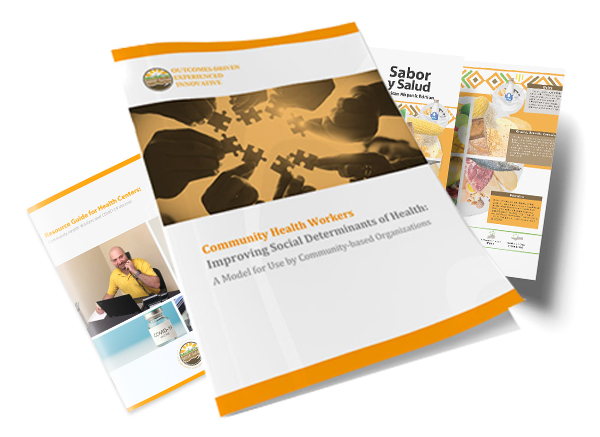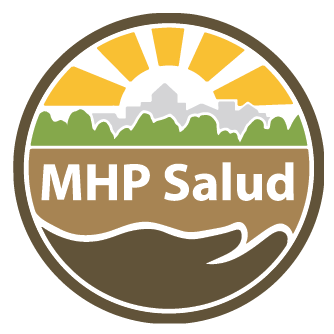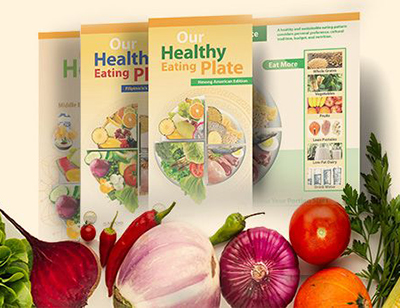Diabetes Across the Lifespan:
Healthy Eating Considerations for Latino Families
Healthy Eating Considerations for Latino Families
Published October 2022 | Back to all news and updates.
- Vulnerable populations are at a higher risk for chronic illnesses such as diabetes due to their lack of access to healthcare and healthy food options.
- Most common foods in the Hispanic/Latino culture are high in sugar and carbohydrates, which lends itself to the high rates of diabetes within this community.
- Community Health Workers deliver culturally inclusive health education resources that help Latinos and other high-risk populations chose the correct meals and portions to manage diabetes and stay in better physical shape.
Diabetes Risk factors
Vulnerable populations can include racial and ethnic minorities, the uninsured, low-income families, older adults, homeless individuals, and those with chronic health conditions, including severe mental illness. Vulnerable populations are at a higher risk for chronic illnesses such as diabetes due to their lack of access to healthcare and healthy food options. 1 Anyone can develop diabetes; however, some minority groups are at higher risk of being diagnosed with diabetes than other ethnic groups.
According to the CDC, you are at risk for type 2 diabetes if you have any of the following characteristics:
- Have prediabetes
- Are overweight
- Are 45 years or older
- Have a parent, brother, or sister with type 2 diabetes
- Are physically active less than 3 times a week
- Have ever had gestational diabetes (diabetes during pregnancy) or given birth to a baby who weighed over 9 pounds
- Are of African American, Hispanic or Latino, American Indian, or Alaska Native descent. Some Pacific Islanders and Asian American individuals are also at higher risk.
- Have a non-alcoholic fatty liver disease. 2
USDA Healthy Eating Plate and Supporting Resources
Eating healthy is a lifestyle change that sometimes can be difficult due to prep time and the costs of choosing healthier food options. Often the most popular comfort foods are either high in carbohydrates or sugars. Most common foods in the Hispanic/Latino culture are high in sugar and carbohydrates, such as fried rice, refried beans, aguas frescas, soda, tortillas, and sweet bread. Portion control is essential – it is not necessarily what we eat but how much we eat. Choosing the correct meals and portions are important when managing diabetes to stay in better physical shape and regulate daily glucose levels. Opting for a meal or snack high in sugar or starches can increase blood sugar, whereas skipping a meal or snack can make blood glucose fall. The U.S. Department of Agriculture suggests using the Healthy Plate resource on their website to learn about and practice portion control and replacing meals and drinks with healthier options for long-term success in diabetes management. The online tools include resources on eating healthy on a budget, nutrition knowledge and skills, and plans for eating healthy. The Healthy Plate is a visual suggestion on what foods to include in your meals, such as fruits, vegetables, grains, proteins, and dairy, and the portion for each category.3
CHW Interventions Addressing Diabetes Prevention
CHW-led programs provide education on debunking myths by providing the most current accredited information available. Social stigmas exist related to having the condition, as those with diabetes may need time to check their levels during work hours, eat a snack between meals, or take a break if they have symptoms of low or high blood sugar levels. Many participants in these programs have a minimal understanding of their health conditions. CHWs take the time to explain the symptoms, risk factors, side effects of not managing the condition properly, and the importance of taking medication as prescribed, getting enough sleep, and managing stress. When participants learn to better manage their diabetes, they can live a normal life, be active, and avoid complications related to their chronic condition.
Some examples of myths related to diabetes are listed here:
- People with diabetes cannot eat sugar
- Type 2 diabetes is mild
- Type 2 diabetes only affects fat people
- People with diabetes should only eat diabetic food
- People with diabetes go blind and lose their legs
- People with diabetes are dangerous drivers
- People with diabetes should not play sports
- People with diabetes can not do many jobs
- People with diabetes are more likely to be ill
- Diabetes is contagious.4
CHW-led programs provide accessible support and education to vulnerable populations to live healthier lives. CHWs support participants with diabetes and/or at risk of developing diabetes in a unique, culturally appropriate manner. CHWs can help a participant better understand their diagnosis, the symptoms, and complications of their disease in their language and level of understanding. CHWs visit participants in their homes and meet with their support systems to encourage the family to make lifestyle changes (i.e., proper nutrition, physical exercise, and disease management). CHWs can assist participants with resources such as accessing healthcare, medication, and supplies vouchers, as well as other free services such as exercise sites, food banks, and education on diabetes management. Participants are encouraged to participate in self-care practices, such as eating healthy, being active, attending medical appointments, and taking time to do things they enjoy to minimize stress. Overall, CHW interventions have successfully improved health outcomes among individuals diagnosed with diabetes.5
My work as a CHW in a diabetes program has allowed me to see the critical role we play in our participants’ lives. We encourage participants to make life changes that affect their diabetes management, such as nutrition, physical activity, and understanding their diagnosis. In Latino culture, we celebrate with foods that are usually high in sugar and carbohydrates and greet our guests with sweet bread, sugary drinks, and heavy foods. As a CHW, we can explain the importance of proper diabetes management and encourage participants to make lifelong style changes.
Linda Medrano
MHP Salud Community Health Worker

Diabetes Resources
- The Association of Diabetes care and Education Specialist website shares online Tools and Resources to help manage diabetes, prediabetes, or other chronic conditions to include monitoring, reducing risks and healthy eating to name a few. To access this resource, click here.
- The American Diabetes Association (ADA) shares online diabetes resources to include a risk test and health education topics to understand Diabetes diagnosis, A1C and Diabetes symptoms and complications. To access the ADA Resources, click here.
- The Centers for Disease Control (CDC) shares online resources on Diabetes Education and Support. These resources include Diabetes Basics, healthy eating, being active, diet and exercise and Diabetes care during emergencies. To access this resource, Click here.
- The S. Department of Agriculture (USDA) shares resources on MyPlate a tool for healthy food choices. The website resources include a quiz, personalized resources, MyPlate food group options, videos, recipes, and tip sheets. To learn more about these resources, click here.
- MHP Salud shares online resource on My Health Plate Education Tool. These brochures cover culturally friendly options for healthy eating. To download and view the healthy option plates click here.
Visit our FREE resource portfolio for more tools and information on how to help at-risk populations manage their chronic conditions!
HRSA Disclaimer
This publication is supported by the Health Resources and Services Administration (HRSA) of the U.S. Department of Health and Human Services (HHS) as part of awards as follow: Health Outreach Partners (HOP) National Training & Technical Assistance National Cooperative Agreement totaling $847,285.00 with 0 percent financed with non-governmental sources and MHP Salud National Training & Technical Assistance Cooperative Agreement totaling $678,959.00 with 0 percent financed with non-governmental sources. The contents are those of the author(s) and do not necessarily represent the official views of, nor an endorsement, by HRSA, HHS or the U.S. Government. For more information, visit www.HRSA.gov.
Blog Topics
These brochures provide easy-to-follow instructions on how to read food labels, include culturally appropriate food suggestions for each of the five food groups, and include relatable ways to manage and measure portions when building a healthy plate.








